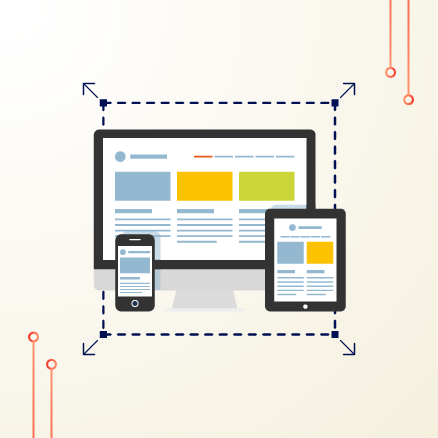Website Development
MOBILE VS DESKTOP: A CLOSER LOOK AT RESPONSIVE WEB DESIGN
Posted By On the fuze, Dec 13, 2023 06:47:25 PM

Stay updated on all things HubSpot automation, website development and design by following our blog posts.
According to Statista, mobile devices account for over 50% of global website traffic… which means failing to cater to devices beyond a desktop, will ultimately lose you leads and business!
That's where responsive web design comes in. In this blog post, we will closely examine what responsive web design is all about and why it has become a game-changer in today’s digital focused landscape.
So, What Exactly is Responsive Web Design?

Responsive Web Design is an approach to web design which makes web pages render well on various devices and window or screen sizes.
In simpler terms, it’s all about creating websites that automatically adjust and adapt their layout and content according to the screen size, whether it's a desktop, laptop, tablet, or smartphone.
Why Should Businesses Care?
Now, you might be thinking, "Why should I bother with this? My website looks fine on my laptop." Well, here's the thing… the landscape of online browsing has changed dramatically over the past decade.
According to Statista, mobile devices account for over 50% of global website traffic. If your website fails to cater to this significant portion of your potential audience, you could lose valuable leads, conversions, and revenue.
Key Benefits of Responsive Web Design:
- Seamless User Experience: A responsive website guarantees a seamless and consistent user experience across all devices. Users can effortlessly navigate and interact with your website, regardless of the screen size, increasing engagement and satisfaction.
- Improved SEO Performance: Search engines favor mobile-friendly websites. With responsive web design, you can ensure that your website ranks higher on search engine result pages (SERPs), increasing organic traffic and visibility.
- Reduce Costs, Increase Efficiency: Maintaining a single website that adapts to different screen sizes is more cost-effective and time-efficient than creating multiple versions for different devices. Save on development and maintenance costs while reaching a broader audience.
- Future-Proof Your Website: The technology landscape constantly evolves, with new devices and screen sizes emerging regularly. By embracing responsive web design, you future-proof your website, ensuring it remains visually appealing and functional across present and future devices.
How Does Responsive Web Design Work?
Behind the scenes, responsive web design relies on a combination of flexible grids, responsive images, and media queries.

• Responsive images automatically scale and adapt to fit different devices.
• Media queries enable the website to detect the device's characteristics and apply the appropriate styles accordingly.
In today's mobile-centric world, having a responsive website is no longer a luxury but a necessity. By implementing responsive web design, you can provide an optimal user experience, improve your website's visibility, and stay ahead of the competition.
Interested in redesigning and building your website with HubSpot?
OTF’s team expert HubSpot Developers and Digital Designers created 50+ high-performing, beautiful websites in the last 6 months!
Contact us now to see if it’s a fit for your company.
Related Post

